Get a Deal on a New Car in 2018
Cars cost more, but automakers are offering generous incentives to lure you into the showroom.


That new-car feeling doesn't come cheap these days. Buyers paid a record $35,082, on average, for a new vehicle in late 2017, up $793 from 2016. Buyers of small SUVs—the most popular type of vehicle—paid an average of $28,260.
But car sales are now slowing, after several years of gains, prompting automakers to ramp up discounts that can shave thousands of dollars off the sticker price. The average package of incentives—mainly cash rebates or low-interest-rate financing from manufacturers—was recently worth $3,820, according to car-buying website TrueCar.com. That's 11% of the average new-car transaction price, but dealers' discounts may sweeten the pot even more. And those perks come before you do any haggling (see Driving a Hard Bargain on a New 2018 Car).
One reason for rising sticker prices is that even moderately priced cars come loaded with high-tech gizmos and safety equipment. Cars that cost less than $25,000 now include features found almost exclusively in luxury models a few years ago. For example, Toyota recently launched a new subcompact SUV, the C-HR (starting at $23,495), which comes with a 7-inch touch-screen display and dual-zone climate control as standard features. It also comes with Toyota Safety Sense—a suite of sophisticated safety technologies that include automatic high beams; radar-based cruise control that maintains a safe following distance on the highway; and a system that alerts you if the car drifts into the next lane (and nudges the steering back on course).

Sign up for Kiplinger’s Free E-Newsletters
Profit and prosper with the best of expert advice on investing, taxes, retirement, personal finance and more - straight to your e-mail.
Profit and prosper with the best of expert advice - straight to your e-mail.
Deals on Sedans
Sedans, coupes and hatchbacks aren't selling nearly as well as they did before the rise of the SUV. But the fading popularity of traditional cars means that dealers and manufacturers are loading them up with incentives to move them off the lot. Ford recently offered $5,000 cash back on its full-size Taurus sedan ($28,470)—whose sales have been sagging for years (although it remains popular as a police cruiser). And you shouldn’t have a problem whittling the price down further. Big sedans such as the Taurus sit on dealers' lots for an average of 124 days, well above the industry average of 82 days, says car-shopping guide Kelley Blue Book.
Another big car at a nice price is the Toyota Avalon ($34,395)—available recently with a $3,500 cash-back offer from Toyota. It features elegant leather upholstery, a silky-smooth ride and loads of high-tech safety features. Ignore the name badge and you may not be able to tell the difference between an Avalon and a costlier Lexus sedan, says Karl Brauer, executive publisher of Kelley Blue Book and kbb.com. "The Avalon is the poster child for a plush, dependable car, at a great price," he says. Plus, the Avalon has a strong resale value—another trait to look for when you go new-car shopping. It should hold 45% of its new-car sticker price after three years of ownership, above the average of 40% for full-size sedans, according to TrueCar.
Midsize sedans, despite losing popularity, have plenty of merits, too. These cars have been getting steadily larger and now have cabins and trunks that are only a few cubic feet smaller than those of full-size cars. Strong, fuel-efficient four-cylinder engines are standard these days. And many mainstream cars have options plucked from the luxury-car parts bin, such as graphical "head up" displays that show the car's speed and other information on a pop-up screen or in the windshield, available on upper-level trims of models such as the Buick LaCrosse Premium ($37,295) and Mazda6 Grand Touring ($31,585).
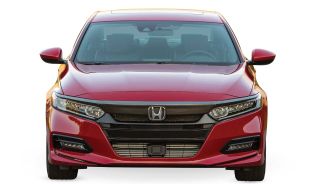
Two longtime sales winners, the Honda Accord and the Toyota Camry, both received full makeovers for the 2018 model year. The changes include more-stylish bodies and interiors, and smoother, fuel-efficient engines. The Accord also features a touch screen with Apple CarPlay and Android Auto, which integrates text messages and phone functions from a mobile device with the car's display.
Neither of these cars is likely to be as deeply discounted as models such as the Chevrolet Malibu ($22,555) and Hyundai Sonata ($22,935), which don't sell as well. But both the Accord and the Camry should hold about 50% of their value after three years of ownership, above the category average of 43% for midsize cars, according to TrueCar. Even if you pay more for the car up front than you would for a less popular but similarly equipped model, you should recoup the extra cost when you sell the car in a few years, says Eric Lyman, vice president of industry insights at TrueCar.
SUVs: Slimmed Down
Crossovers have overtaken sedans in annual sales. The latest trend is the rise of the svelte SUV. Automakers have launched 10 subcompact crossovers since 2013, and more are on the way, such as the Hyundai Kona and Nissan Kicks, both coming later this year. These vehicles are basically jacked-up compact cars, but they have the versatility of an SUV and run on spirited four-cylinder engines that get decent gas mileage.
Many small SUVs aim for fun, too. The Fiat 500X, for instance, features bold paint colors, such as a black the company calls Nero Cinema, along with options such as ambient interior lighting and a Beats premium sound system (on upper-level trims). One caveat: Some of these SUVs aren’t likely to hold their value well. TrueCar predicts that the Fiat 500X will be worth 35% of its sticker price three years after purchase, well below the average of 50% for subcompact SUVs. Topping the category for resale value is the Subaru Crosstrek ($22,710), at 62%, followed by the Mazda CX-3 ($21,285) and Toyota C-HR ($23,495), both at about 50%.
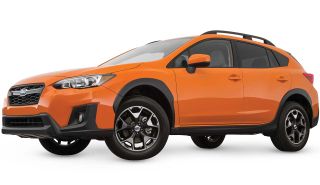
For a slightly larger ride, we recommend the Honda CR-V ($25,125), the best-selling SUV for 20 years in a row. Fully redesigned in 2017, the latest edition includes more interior space, new turbocharged engines and a vastly improved touch screen (with Apple CarPlay and Android Auto). Pony up for the Touring edition ($33,625) and you'll get rain-sensing wipers, LED headlights with automatic high beams, and a hands-free tailgate (activated by waving a foot under the rear of the vehicle). The CR-V is also a resale-value champ, retaining 54% of its new-car sticker price after three years.
Among SUVs with three rows of seating, it's tough to beat the Toyota Highlander ($32,420). Refreshed in 2017, it has sportier styling, more comfort features and a punchier six-cylinder engine, along with Toyota Safety Sense as standard equipment. The SUV should hold 60% of its resale value after three years, beating every other big SUV except the Toyota 4Runner ($37,125), at 64%. Consider the six-cylinder XLE, which includes such upgrades as an auto-dimming rearview mirror, heated front seats and a "smart key" system. Other three-row SUVs with Apple CarPlay and Android Auto include the Honda Pilot EX ($31,875) and the Ford Explorer ($32,985).
SUVs are thriving in the luxury market, too, where more than a dozen new models have been launched in the past three years. Recent entrants include the Audi Q3 ($33,875), Mercedes-Benz GLA ($34,395), Land Rover Discovery Sport ($38,790) and Lexus NX ($36,980). All of these models drive smoothly, thanks to their slim bodies and perky engines, and their interiors tend to be more elegant than those of non-premium cars.
If you can swing the extra bucks, the Porsche Cayenne ($66,750) leads the pack for sportiness, including a robust 340-horsepower engine. (The Cayenne S, starting at $83,950, has 440 hp.) Also compelling is the Range Rover Velar ($50,895), a rugged and handsome SUV with dual 10-inch touch screens and a high-tech suspension system with six drive modes. In a test drive, we found the car exhilarating, but its touch screens are a bit finicky and cumbersome to use, and the seats aren't all that comfortable. Plus, the Velar's systems aren't compatible with Apple CarPlay or Android Auto.
Green Cars Go Mainstream
Eco-friendly gas-electric hybrids now populate every vehicle category. All get excellent fuel economy compared with conventional models. Topping the charts is the Hyundai Ioniq Hybrid Blue ($23,085), which gets 58 miles per gallon in combined city-highway driving, beating even the Toyota Prius Eco (56 mpg).
Plug-in hybrids, which have more-powerful batteries for extended cruising on pure electric power, fare even better. One of the best-selling plug-ins on the market, the Chevy Volt ($34,095), can run up to 53 miles on an electric charge (below highway speed) without using a drop of gas. The spritely Honda Clarity ($34,290), an all-new model for 2018, has an all-electric range of up to 47 miles.
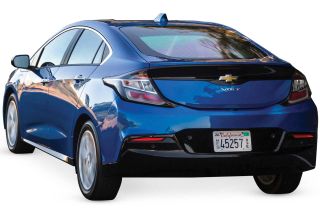
Midsize plug-in sedans, such as the Ford Fusion Energi Plug-in Hybrid ($32,995), work better as family haulers, and so do several SUVs. The all-new Kia Niro Plug-in Hybrid SUV ($28,840), for instance, gets 46 miles per gallon with its gasoline engine but can cruise up to 26 miles on battery power alone.
Luxury SUVs come with plug-in technology, too. One model that we tested, the all-new Volvo XC60 T8 Hybrid ($53,895), glided effortlessly through city traffic, cruising about 12 miles on electric power alone. The interior featured comfy, leather-stitched seats with a back-massage function and a premium Bowers and Wilkins sound system. Charging the car’s battery was a snap: We simply plugged it into a standard garage power outlet to get juiced up for the morning commute.
Low gas prices make it tough for hybrids to pay off financially. The Chevy Malibu hybrid gets a terrific 46 miles per gallon in combined city-highway driving, compared with 30 for the conventional Malibu. But at gas prices of $2.50 per gallon, it would take 6.3 years to recoup the additional $2,750 that the hybrid Malibu costs, according to a calculator at Fueleconomy.gov. Many plug-in hybrids and all-electric cars are eligible for a 2018 federal income tax credit of up to $7,500, based on the capacity of the vehicle's battery. Buyers may be eligible for state tax breaks or other rebates, too (notably in California, Colorado and Maryland).
Buy an all-electric car, of course, and you won't pay for a drop of gas. Tesla shines the brightest in this field, with an expanding lineup that now includes the Model 3 sedan ($35,000), a mass-market car launched in 2017 with a waiting list for buyers. The ranks of all-electric cars now include the Chevrolet Bolt ($37,495), Ford Focus Electric ($29,995), Kia Soul Electric ($34,845) and Volkswagen eGolf ($31,345). All of these vehicles have a limited driving range before their batteries give out; among them, the Bolt leads the charge with a 238-mile range, followed by the eGolf (125-mile range) and the Focus Electric (115 miles). Visit Fueleconomy.gov to see cost-savings estimates for green vehicles.
Driverless Driving is Almost Here
Fully automated cars aren't likely to make it into the consumer market for several years. But vehicles are becoming "semiautonomous" as manufacturers layer in the foundations of the technology. Dynamic cruise control, which adjusts the car's speed to traffic conditions, is now widely available, as is lane-centering technology that can prevent your car from drifting out of its lane.
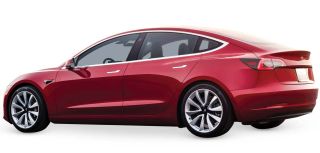
Radar-based collision-avoidance systems are getting more sophisticated, too. Not only can they sense a potential collision with another car—and apply brake pressure—but they are also able to detect animals, pedestrians and road hazards. Tesla says its new Enhanced Autopilot system can practically do it all: cruise down the highway (though a driver's hands need to be on the wheel when the car is on the road), automatically change lanes, take an exit, self-park and even be summoned from a garage.
How safe is all this technology? Collision-avoidance systems do help prevent accidents, says David Kidd, a senior research scientist with the Insurance Institute for Highway Safety. But human drivers are still a wild card: They seem to be rear-ending automated cars at an above-average rate, according to self-driving technology company Waymo's test data.
tAKE OUR QUIZ: Are You Getting the Best Deal on a Used Car?
Get Kiplinger Today newsletter — free
Profit and prosper with the best of Kiplinger's advice on investing, taxes, retirement, personal finance and much more. Delivered daily. Enter your email in the box and click Sign Me Up.

-
 How to Use H&R Block Tax Prep Software
How to Use H&R Block Tax Prep SoftwareHere’s what you need to know if you want to file your taxes with H&R Block’s tax prep software this year.
By Rachael Green Published
-
 Stock Market Today: Trump Pushes Dow Into 2,600-Point Swing
Stock Market Today: Trump Pushes Dow Into 2,600-Point SwingTariffs and trade war weigh on prices across global financial markets, with little light at the end of the tunnel.
By David Dittman Published
-
 Roth IRA Contribution Limits for 2025
Roth IRA Contribution Limits for 2025Roth IRAs Roth IRA contribution limits have gone up. Here's what you need to know.
By Jackie Stewart Last updated
-
 Four Tips for Renting Out Your Home on Airbnb
Four Tips for Renting Out Your Home on Airbnbreal estate Here's what you should know before listing your home on Airbnb.
By Miriam Cross Published
-
 Five Ways to a Cheap Last-Minute Vacation
Five Ways to a Cheap Last-Minute VacationTravel It is possible to pull off a cheap last-minute vacation. Here are some tips to make it happen.
By Vaishali Varu Last updated
-
 How to Figure Out How Much Life Insurance You Need
How to Figure Out How Much Life Insurance You Needinsurance Instead of relying on rules of thumb, you’re better off taking a systematic approach to figuring your life insurance needs.
By Kimberly Lankford Last updated
-
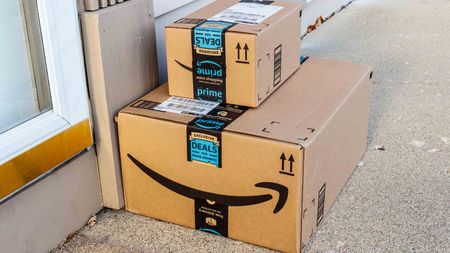 Amazon Big Deal Days Is Coming! We’ve Got All the Details
Amazon Big Deal Days Is Coming! We’ve Got All the DetailsAmazon Prime To kick off the holiday season with a bang, Amazon Big Deal Days runs Tuesday, October 8 and Wednesday, October 9.
By Bob Niedt Last updated
-
 How to Shop for Life Insurance in 3 Easy Steps
How to Shop for Life Insurance in 3 Easy Stepsinsurance Shopping for life insurance? You may be able to estimate how much you need online, but that's just the start of your search.
By Kaitlin Pitsker Last updated
-
 Five Ways to Shop for a Low Mortgage Rate
Five Ways to Shop for a Low Mortgage RateBecoming a Homeowner Mortgage rates are high this year, but you can still find an affordable loan with these tips.
By Daniel Bortz Last updated
-
 Retirees, It's Not Too Late to Buy Life Insurance
Retirees, It's Not Too Late to Buy Life Insurancelife insurance Improvements in underwriting have made it easier to qualify for life insurance, which can be a useful estate-planning tool.
By David Rodeck Published